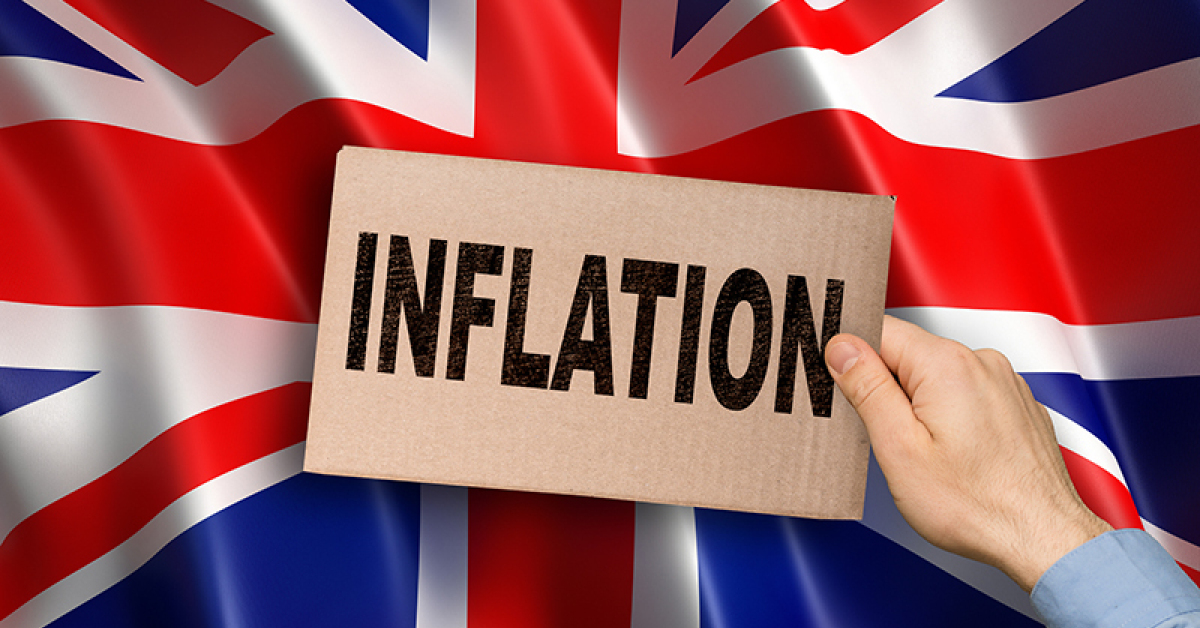UK Inflation Rises to 3.8% in July, Driven by Airfare and Food Costs, Weakening Hopes for Further Rate Cuts

Key Takeways:
- UK inflation rose to 3.8% in July, driven by a record surge in airfares and stubborn food prices, dashing hopes for another Bank of England rate cut this year.
- The Labour government faces political pressure as households—especially lower-income families—struggle with higher living costs despite earlier promises to ease the squeeze.
- Economists warn that structural issues like weak sterling, Brexit trade frictions, and wage growth make UK inflation stickier than in the US or Eurozone, complicating the path back to stability.
Inflation in the United Kingdom accelerated more sharply than expected in July, reaching 3.8% in the year to date, according to official figures published by the Office for National Statistics (ONS). The increase, driven by steep rises in airfares and persistent food price inflation, represents the highest level since January 2024 and has cast doubt on whether the Bank of England will be able to cut interest rates again this year.
The figures land at a politically sensitive moment for the Labour government, which was propelled into office in July 2024 partly on a promise to ease the cost-of-living crisis. A year later, households and businesses are still wrestling with higher prices, and policymakers are faced with difficult trade-offs between growth and inflation control.
The Data: Airfares and Food Drive the Surge
The ONS data showed that consumer price inflation rose from 3.6% in June to 3.8% in July, outpacing economists’ expectations of a more modest 3.7% increase.
The most striking element in the July report was the 30.2% month-on-month rise in airfares, the sharpest increase since the ONS began collecting such data in 2001. Analysts attributed the surge to strong demand during the school holidays, when families typically book flights, combined with airlines raising ticket prices to offset higher fuel and operational costs.
Food inflation also proved sticky, climbing to 4.9% in July. Prices for beef, instant coffee, and orange juice were among the biggest contributors. Over the past five years, food and non-alcoholic drink prices have risen by about 37%, according to the ONS.
The stubbornly high cost of groceries is particularly concerning for lower-income households, who spend a larger share of their income on food and essentials. BBC consumer affairs correspondent Colletta Smith warned that the poorest families are “once again at the sharpest end of the inflation squeeze.”
Bank of England’s Dilemma
The inflation figures come just weeks after the Bank of England (BoE) cut its main interest rate by a quarter point, from 4.25% to 4%—its fifth reduction in a year. Rates had previously peaked at 5.25%, a 16-year high, as the Bank fought to bring double-digit inflation back under control.
With inflation still nearly double the Bank’s 2% target, analysts say the July numbers may have ended hopes for another rate cut in September.
“July’s outturn probably extinguishes hope of a September interest rate cut,” said Suren Thiru, economics director at the Institute of Chartered Accountants in England and Wales (ICAEW). “Strengthening underlying inflationary pressures call into question whether policymakers will be able to relax policy again this year.”
The BoE has signalled that it expects inflation to peak at 4% in September before resuming its decline, but the July data underline the risks of cutting too aggressively. While lower rates would support households and businesses, they could also risk fuelling demand and reigniting price pressures.
Political Fallout
For the Labour government, which won office last summer after promising to prioritise cost-of-living relief, the numbers are an unwelcome reminder of how difficult it is to tame inflation.
Treasury chief Rachel Reeves acknowledged that there was “more to do to ease the cost of living.” She pointed to recent government action on energy bills and housing costs but conceded that many households still feel squeezed.
The opposition, meanwhile, seized on the figures. Shadow chancellor Mel Stride called the data “deeply worrying for families” and accused Labour of failing to offer credible solutions to rising prices.
Political analysts note that while inflation has fallen dramatically from its peak of more than 11% in late 2022, progress has slowed, leaving the government vulnerable to criticism from both the left and right.
The Impact on Households
The inflation surge is hitting households unevenly. Families booking summer holidays are directly affected by the spike in airfares, while virtually everyone is impacted by higher food prices.
ONS figures show that households on the lowest incomes spend nearly 50% of their budget on food, housing, and energy, compared with around 30% for higher-income households. As a result, inflation feels significantly higher for those already struggling.
In Manchester, a small chocolate shop owner told the BBC that businesses were being forced to come up with “innovative” solutions to keep costs down, from shrinking product sizes to renegotiating supplier contracts.
In Cheshire, a farmer warned that a poor harvest could push up prices for eggs and meat, exacerbating food price inflation in the months ahead.
Business Reaction
Businesses across sectors are grappling with cost pressures and weak consumer demand. Retailers report that shoppers are trading down to cheaper brands, while restaurants and hospitality firms say customers are cutting back on discretionary spending.
Airlines, while benefiting from higher ticket prices, face their own challenges in the form of volatile fuel costs and capacity constraints. Analysts warn that consumers may eventually cut back on travel if prices remain prohibitively high, leading to a potential reversal in demand.
For small and medium-sized businesses, higher borrowing costs have compounded the challenge. While recent rate cuts have provided some relief, credit remains more expensive than it was before the tightening cycle began in 2021.
Historical Context
The UK has wrestled with elevated inflation for much of the past three years. The global energy shock triggered by Russia’s invasion of Ukraine in 2022 sent consumer prices soaring, pushing UK inflation to a peak above 11%—the highest in four decades.
Since then, inflation has steadily declined, but the path has been uneven. Goods prices have fallen back more quickly than services inflation, which remains sticky.
Airfare costs have been particularly volatile, reflecting both seasonal factors and the impact of pent-up demand after the pandemic. Food prices, meanwhile, have been influenced by global supply chain disruptions, climate-related crop failures, and currency fluctuations.
International Comparison
The UK is not alone in grappling with stubborn inflation. In the United States, inflation eased to 2.9% in July, while the Eurozone recorded inflation of 2.6%. Both are closer to their central banks’ targets than the UK, highlighting the particular challenges facing Britain.
Sterling’s relative weakness has made imports more expensive, while Brexit-related trade frictions have added to costs. Economists argue that these structural factors partly explain why UK inflation has proven more persistent than that of its peers.
The Outlook
Looking ahead, much depends on whether the Bank of England is correct in forecasting a peak in inflation this autumn. If inflation eases back towards 3% by year-end, pressure may ease on households, businesses, and policymakers alike.
But risks abound. A poor harvest could drive up food prices further, while oil price volatility or geopolitical tensions could push up transport and energy costs. Domestically, wage growth—currently running at around 4.5% annually—also threatens to entrench inflation if not matched by productivity gains.
Markets are now pricing in a longer pause in the BoE’s rate-cutting cycle, with expectations for further easing pushed into 2026. For households with mortgages, that means borrowing costs are unlikely to fall significantly in the short term.
Conclusion: A Balancing Act
The July inflation figures underscore the delicate balancing act facing UK policymakers. For the government, the challenge is to demonstrate progress on easing the cost of living while maintaining credibility with markets. For the Bank of England, it is to cut rates carefully enough to support growth without letting inflation run away again.
With inflation still well above target and households under pressure, neither task will be easy. For now, the message from the data is clear: while Britain has moved on from the worst of its inflation crisis, the path back to stability will be slower and bumpier than many had hoped.
Call Parachute Law today on 0207 183 4547
Related Reading:
New Plans Promise Easier Access to Historic Wills Through Digitisation Drive


